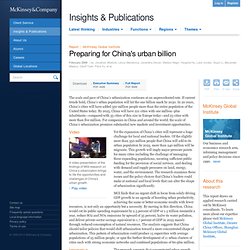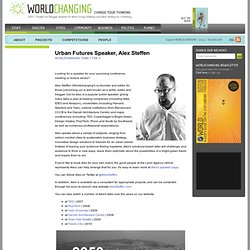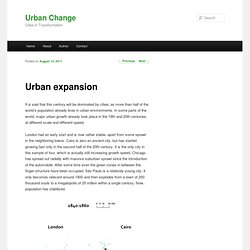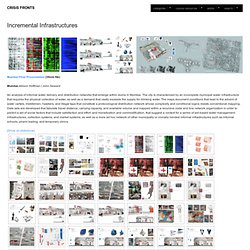

Georg-Simmel-Zentrum für Metropolenforschung. Leibniz Institut für Regionalentwicklung und Strukturplanung, Erkner. NSL - Netzwerk Stadt und Landschaft / NSL - Network City and Landscape. International Organization for Migration. World Migration Report 2010. Home. International Migration and Development. CDIA Asia. McKinsey China's urban billion - February 2009. The scale and pace of China's urbanization continues at an unprecedented rate.

If current trends hold, China's urban population will hit the one billion mark by 2030. In 20 years, China's cities will have added 350 million people more than the entire population of the United States today. By 2025, China will have 221 cities with one million–plus inhabitants—compared with 35 cities of this size in Europe today—and 23 cities with more than five million. For companies in China and around the world, the scale of China’s urbanization promises substantial new markets and investment opportunities. Video A video presentation of the findings of MGI research on China’s urbanization brings to life the opportunities and challenges of China's urban growth.
Play video Yet the expansion of China's cities will represent a huge challenge for local and national leaders. Audi Urban Future Summit. ISUF - International Seminar on Urban Form. Institut der Stadtbaukunst – Ein Forum für Architektur und Städtebau. New Urbanism. Rediscovering urban complexity. Urban Futures Speaker, Alex Steffen. Looking for a speaker for your upcoming conference, meeting or lecture series?

Alex Steffen (Worldchanging's co-founder and editor, for those just joining us) is well known as a writer, editor and blogger, but he also is a popular public speaker, giving many talks a year at leading companies (including Nike, IDEO and Amazon), universities (including Harvard, Stanford and Yale), cultural institutions (from Barcelona's CCCB to the Danish Architecture Centre) and major conferences (including TED, Copenhagen's Bright Green, Design Indaba, Pop! Tech, Picnic and South by Southwest, as well as numerous professional associations). Alex speaks about a variety of subjects, ranging from carbon-neutral cities to sustainable business strategy, innovative design solutions to futurism for an urban planet.
If you'd like to book Alex for your own event, the good people at the Lavin Agency (which represents Alex) can help arrange that for you: it's easy to learn more at Alex's speaker page. Urban Change – Projetos Urbanos » Blog Archive » Urban expansion. It is said that this century will be dominated by cities, as more than half of the world’s population already lives in urban environments.

In some parts of the world, major urban growth already took place in the 19th and 20th centuries, at different scale and different speed. London had an early start and is now rather stable, apart from some sprawl in the neighboring towns. Cairo is also an ancient city, but has started growing fast only in the second half of the 20th century. It is the only city in this sample of four, which is actually still increasing growth speed. Chicago has spread out radially with massive suburban sprawl since the introduction of the automobile. The animation was made using data from the Atlas of Urban Expansion, a project by the Lincoln Institute of Land Policy. Urban Informatics » Partners. Incremental Infrastructures.
Mumbai Final Presentation (30mb file) Mumbai Allison Hoffman | John Seward An analysis of informal water delivery and distribution networks that emerge within slums in Mumbai.

The city is characterized by an incomplete municipal water infrastructure that requires the physical collection of water, as well as a demand that vastly exceeds the supply for drinking water. The maps document conditions that lead to the advent of water cartels, middlemen, hawkers, and illegal taps that constitute a protocological distribution network whose complexity and conditional logics resists conventional mapping.